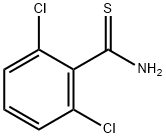Safety Profile
Poison by ingestion and
intraperitoneal route. Moderately toxic by
skin contact. Mutation data reported. An
herbicide. When heated to decomposition it
emits very toxic fumes of Cl-, NOx, and
sox.
Metabolic pathway
Twelve metabolites are isolated from either urine or
bile from either rats (11 metabolites) or goats (seven
metabolites) given single oral doses of 14C-labeled
2,6-dichlorobenzonitrile (DCBN). Five of these
metabolites are also excreted in urine from rats dosed
orally with 2,6-dichlorothiobenzamide (DCTBA) which
is an acid amide analog. All metabolites from either DCBN or DCTBA are benzonitriles with the following
ring substituents: Cl2, OH (three isomers); Cl2, (OH)2;
Cl, (OH)2; Cl, OH, SH; Cl, OH, SCH3; SOCH3, OH;
Cl2, S-(N-acetyl)cysteine; Cl, S-(N-acetyl)cysteine; Cl,
OH, S-(N-acetyl)cysteine.
The thiobenzamide moiety of DCTBA is converted
to the nitrile in all extracted urinary metabolites. No
hydrolysis of the nitrile in DCBN to either amide or an
acid is detected. Urine is the major route for excretion;
however, enterohepatic circulation occurs.

